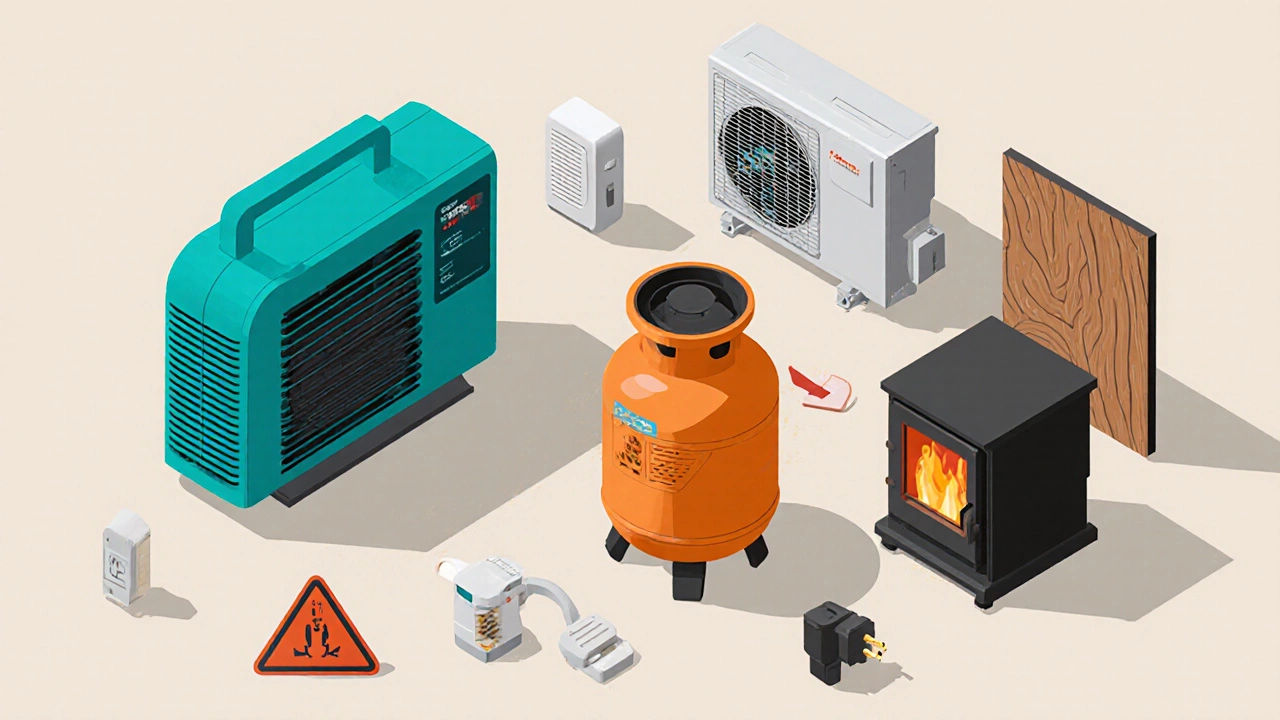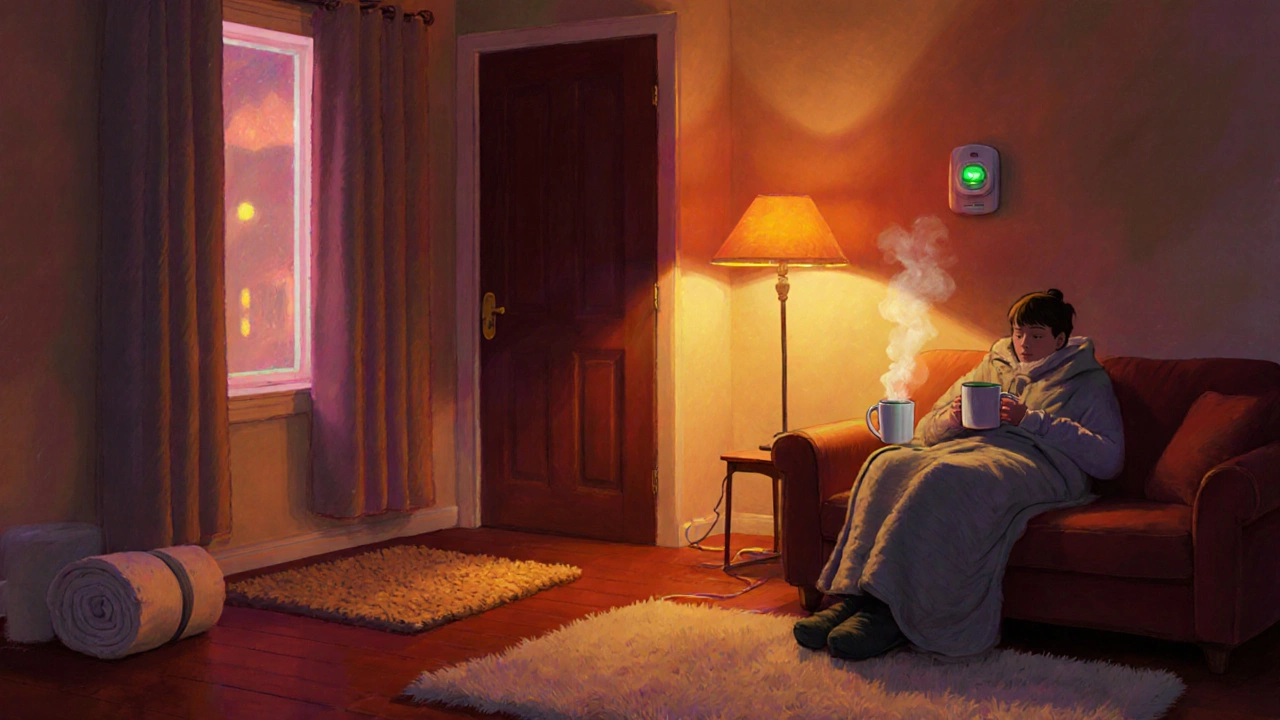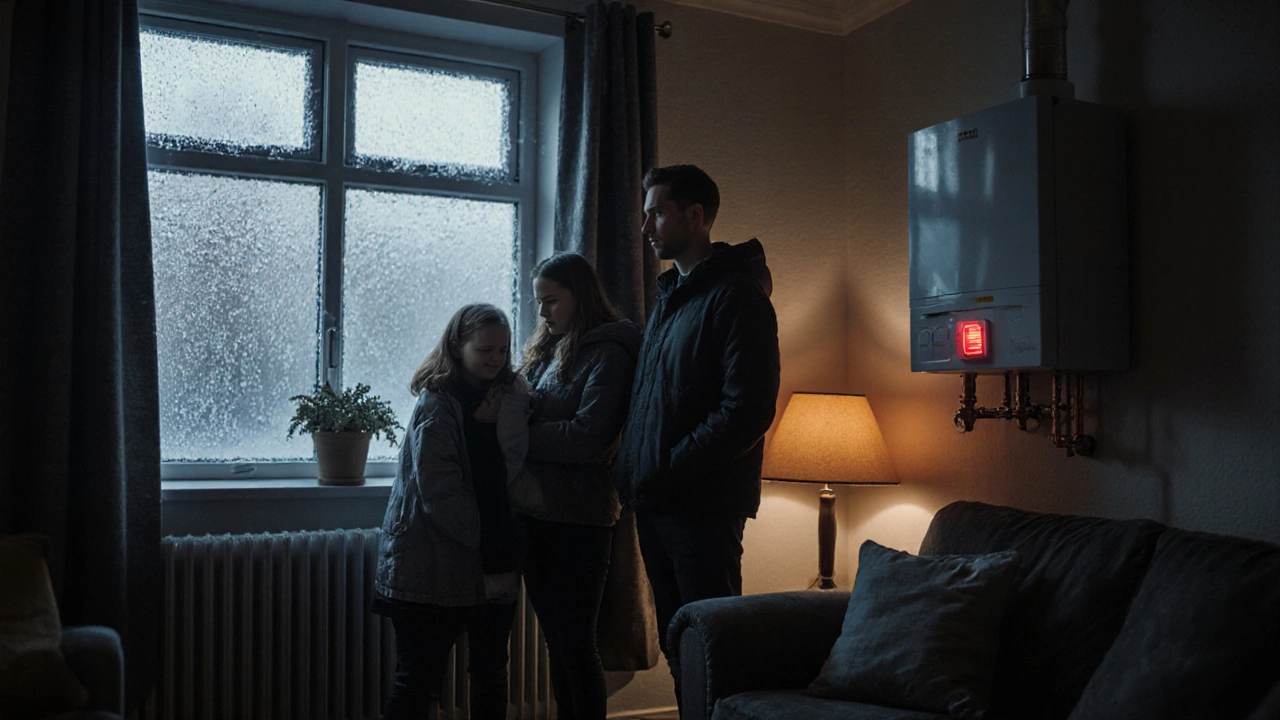Emergency Heater Selection Tool
Find the best temporary heating solution for your home when your boiler breaks. Input your key requirements below, and the tool will recommend the most suitable option based on safety, cost, and effectiveness.
Cost:
Heat Output: BTU/hr
Key Features:
When your boiler decides to quit mid‑winter, the first thought is often, "How can I heat a house with a broken boiler without breaking the bank or risking safety?" You’re not alone. Below is a step‑by‑step guide that covers everything from quick fixes to safe temporary heating options, plus a checklist to keep the chill at bay until a professional can restore your boiler.
What a Boiler Breaks Means for Your Home
Boiler is a closed‑loop heating system that circulates hot water or steam to radiators, under‑floor pipes, and hot‑water tanks. When it fails, you lose both central heating and often domestic hot water, leaving you vulnerable to cold indoor temperatures and potential pipe freezes. Common causes include a loss of pressure, a blown fuse, a faulty thermostat, or a gas supply issue. Identifying these symptoms early can prevent further damage.
Safety First: Check for Gas or Electrical Hazards
- Listen for unusual hissing sounds - could be a gas leak. If you smell gas, evacuate and call your gas supplier immediately.
- Inspect the circuit breaker. A tripped breaker may indicate an electrical fault in the boiler’s controls.
- Make sure any portable heaters you use have proper ventilation to avoid carbon monoxide buildup.
Once you’ve ruled out immediate danger, you can move on to temporary heating methods.
Temporary Heating Options: What Works Best?
Below are the most common short‑term solutions, ranked by cost, safety, and heat output. Choose the one that fits your home size, budget, and availability of fuel.
| Solution | Typical Cost (USD) | Heat Output (BTU/hr) | Energy Source | Safety Rating* |
|---|---|---|---|---|
| Electric Space Heater | $30‑$150 | 5,000‑15,000 | Electricity | High (automatic shut‑off) |
| Portable Propane Heater | $50‑$200 | 6,000‑30,000 | Propane | Medium (requires ventilation) |
| Mini‑Split Heat Pump | $1,200‑$2,500 | 12,000‑36,000 | Electricity | High (no combustion) |
| Wood‑Burning Stove | $800‑$2,000 | 30,000‑80,000 | Wood | Low‑Medium (chimney required) |
| Infrared Panel | $100‑$400 | 4,000‑10,000 | Electricity | High (no moving parts) |
*Safety rating reflects the need for ventilation, carbon monoxide monitoring, and automatic safety features.
How to Set Up Each Temporary Heater Safely
- Electric Space Heaters
- Place the heater on a level, fire‑proof surface at least 3feet away from curtains or furniture.
- Plug directly into a wall outlet; avoid extension cords which can overheat.
- Use models with tip‑over and overheat protection.
- Portable Propane Heaters
- Choose a heater with an integrated oxygen depletion sensor (ODS).
- Operate only in well‑ventilated rooms - open a window slightly.
- Never use in a bedroom while sleeping.
- Mini‑Split Heat Pump
- If you already have an indoor unit, power it on using the separate circuit; it can run independently of the boiler.
- Make sure the outdoor condenser isn’t blocked by snow or debris.
- Set the thermostat to “heat” mode and aim for a gentle 68‑70°F.
- Wood‑Burning Stove
- Only install if you have a proper chimney that meets local building codes.
- Season the wood for at least six months to reduce smoke.
- Keep a fire extinguisher nearby.
- Infrared Panels
- Mount the panel on a wall at about eye level for even coverage.
- Turn on a low setting; infrared heats objects directly, not the air, which is efficient in small rooms.

Boosting Warmth Without a Heater: Insulation Hacks
While you wait for a professional repair, keep the heat you do manage to generate from escaping:
- Thermal Curtains: Close them at night to cut window heat loss by up to 30%.
- Door Draft Stoppers: Roll up towels or use commercial sweeps to stop cold air from hallways.
- Window Film: Apply clear insulating film; it adds an extra barrier without blocking light.
- Rugs and Carpets: Lay them on cold floors; they add a layer of insulation and feel cozier underfoot.
Low‑Tech Warmth: Hot Water Bottles, Electric Blankets, and More
When electricity is limited, simple items can make a big difference:
- Fill rubber hot water bottles and place them at the foot of the bed.
- Use an electric blanket on low heat; it draws less power than a space heater.
- Wear layered clothing-thermal base layers, wool socks, and fleece jackets keep body heat from escaping.
Quick Boiler Reset Tricks You Can Try
Sometimes a boiler isn’t completely dead; a simple reset may restore function, buying you precious hours:
- Turn off the power supply at the circuit breaker.
- Wait 60 seconds, then turn the breaker back on.
- Locate the reset button (often a red or black button on the control panel) and press it.
- If pressure is low, locate the filling valve, open it until the pressure gauge reads 1.0‑1.5bar, then close it.
- Listen for the burner to ignite; if it runs, monitor for a few minutes before trusting the heat.
If these steps don’t work, it’s time to call a qualified technician. Continuing to force the system can cause dangerous leaks or damage.

Emergency Heating Checklist
- Check for gas leaks - smell, sound, or use a Soapy‑water test on connections.
- Gather a safe heating source (electric space heater or portable propane with ODS).
- Seal drafts - curtains, door sweeps, window film.
- Dress in layers, keep blankets close.
- Set up a monitoring system - carbon monoxide detector, smoke alarm, and a phone number for emergency services.
- Contact a certified boiler repair service; have your boiler model and serial number ready.
When to Call a Professional
If you notice any of the following, stop DIY attempts and schedule a service call:
- Persistent low pressure despite refilling.
- Strange noises like banging or whistling.
- Water pooling around the boiler or any sign of corrosion.
- Repeated trips of the circuit breaker.
- Any gas odor, even faint.
A licensed technician can diagnose issues such as a faulty pump, cracked heat exchanger, or control module failure and replace parts safely.
Frequently Asked Questions
Can I safely use a space heater while the boiler is off?
Yes, as long as the heater has built‑in safety features (tip‑over switch, overheat protection), is placed on a stable surface, and you never leave it unattended for long periods.
Do portable propane heaters require a vent?
They do. Propane burns produce carbon monoxide, so you need a window or a larger opening for fresh air. An oxygen‑depletion sensor will shut the unit off if oxygen levels drop.
How long can I run a mini‑split heat pump without a boiler?
Indefinitely, provided the outdoor unit is clear of snow and the electricity supply is stable. It operates independently of the boiler’s water circuit.
What’s the cheapest way to stay warm for a night?
Layered clothing plus a single electric space heater set on low is usually the most cost‑effective method for a single room.
Should I keep the boiler’s water valve open while it’s broken?
Leave the valve closed to prevent leaks, unless you’re actively refilling the system as part of a reset attempt. Otherwise, a closed valve reduces the risk of water damage.


